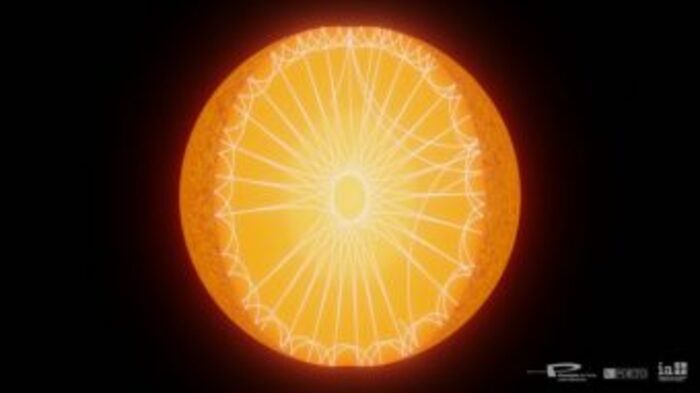The smallest stellar earthquake ever recorded so far has been detected: it shook an orange dwarf 11.9 light-years away from Earth, causing oscillations on its surface with an amplitude of just 2.6 centimeters per second. The discovery is due to the capabilities of the Espresso spectrograph, mounted on the Very Large Telescope of the European Southern Observatory (ESO) in Chile.
The data, useful for clarifying the structure and internal composition of stars, are being published in Astronomy & Astrophysics Letters by an international group of astronomers in which Enrico Corsaro and Ennio Poretti of the National Institute of Astrophysics participated. Stellar earthquakes can be detected by measuring small changes in a star's light. In fact, the pulsations of the surface of the celestial body influence the wavelengths of the visible radiation that we observe, producing shifts towards blue or towards red due to the Doppler effect. In the study in question, thanks to the Espresso spectrograph, the researchers managed to record these luminous variations in the spectrum of Epsilon Indi, an orange dwarf located in the constellation of Indian.
"Thanks to the capabilities of the Espresso spectrograph - observes Corsaro of INAF in Catania - we managed to capture oscillations on the stellar surface with an amplitude of just 2.6 centimeters per second. This new precision limit allows us to measure the oscillations in a new regime that was basically not accessible before, that of cold K-type stars with temperatures around 4,200 degrees Celsius, which exhibit very small oscillations. Prior to this work, the coldest star in which solar-type oscillations were measured it was the star Kepler-444, which has a temperature above 4700 degrees."
The study's findings will help researchers resolve the long-standing disagreement between theory and observations about the relationship between mass and diameter of these particular stars. Orange dwarfs and their planetary systems have recently become a prime target in the search for habitable worlds and extraterrestrial life. The results of this study demonstrate that asteroseismology could be used to characterize these stars and their habitable planets. Furthermore, the precise determination of the age of nearby cold stars thanks to asteroseismology could be fundamental for interpreting the signatures of life on exoplanets photographed via direct imaging.

